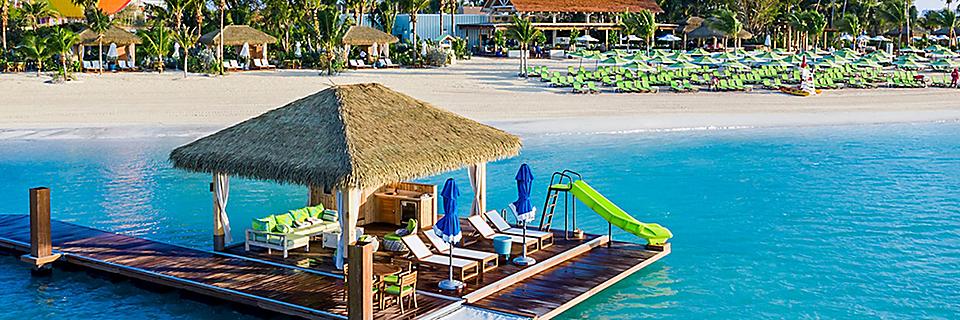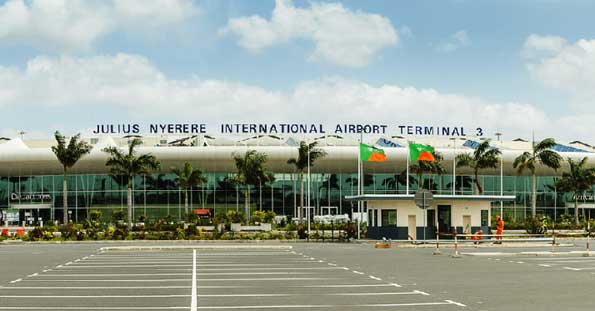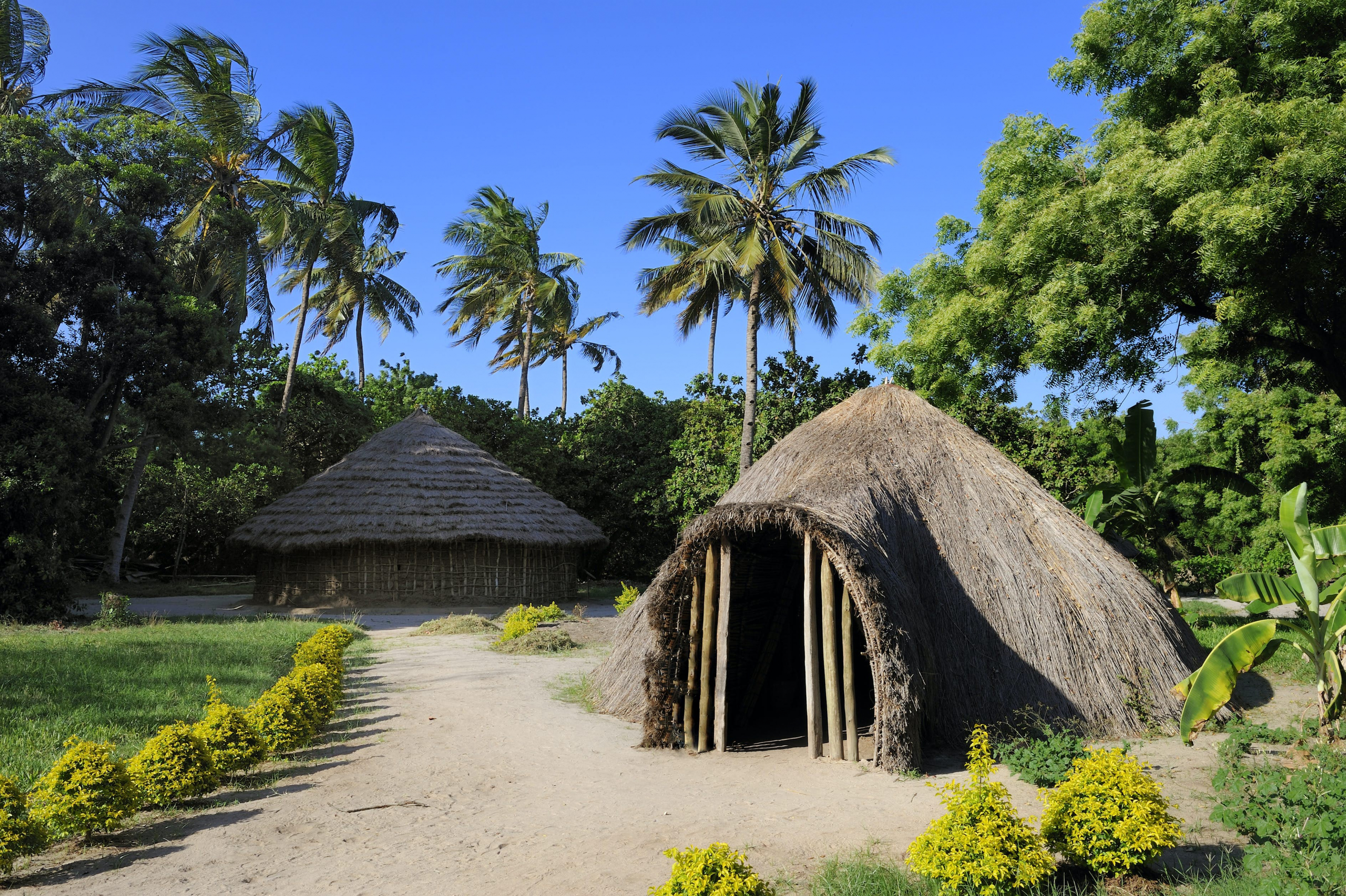Dar es Salaam City : Dar es Salaam, or call it Dar is a major city in Tanzania. Dar es Salaam is an Arabic name that means “haven of peace.” It is derived from the words “Dar” (“house”) and “es salaam” (“of peace”), and so “dar es salaam” means “haven of peace” in Arabic. Dar es Salaam is Tanzania’s largest city and financial center. It is also the regional capital of Dar es Salaam. Dar es Salaam is the largest city in East Africa and the seventh-largest in Africa, with a population of approximately six million people.

Dar es Salaam, on the Swahili coast, is an important economic center and one of the world’s fastest-growing cities. Dar es Salaam has evolved from a sleepy fishing town to Tanzania’s largest city and one of the busiest ports in East Africa. Dar es Salaam served as Tanzania’s capital until 1974, when it was deposed in favor of Dodoma. With the majority of the country’s important administrative offices, it continues to wield more power. The city’s architectural architecture is heavily influenced by German, British, and Asian styles.
Congestion and traffic jams plague the city, as they do in most developing-country capitals. During the busy evenings in the city center, the Tuk-tuk or motorcycle may be the sole savior. Many travelers neglect Dar es Salaam as a significant tourist attraction, preferring instead to utilize it as a gateway to the country’s major national parks or the islands of Pemba and Zanzibar. Dar es Salaam has its own set of attractions, including pristine beaches, monuments, artisan centers, retail malls, restaurants, nightclubs, museums, and botanical gardens, to name a few.
Dar es Salaam is the most important city in Tanzania for the arts, fashion, media, film, television, and finance. It is the capital of Tanzania’s Dar es Salaam Region, which includes five districts: Kinondoni in the north, Ilala in the center, Ubungo and Temeke in the south, and Kigamboni in the east.
WHEN IS THE BEST TIME TO VISIT DAR ES SALAAM?
Due to its proximity to the equator, Dar es Salaam may be visited all year (relatively stable weather). The optimum time to visit Dar es Salaam is determined by the activities planned because the country has two seasons: rainy and dry. Heavy rains fall in the months of March and May. There is also a lot of rain between November and early December. We have what is known as the dry season in between. The months of January to March and June to October are the best times to visit if you want to see the beaches, islands, and wildlife in the countryside.
TRANSPORT IN DAR ES SALAAM
All modes of transportation, including air, boat, train, and road, are available in Dar es Salaam. You can fly from your location to Julius Nyerere International Airport in Dar es Salaam by international transportation.
Airport
The Julius Nyerere International Airport, which has three active terminals, is the country’s primary airport. Terminal Three is located in the Ilala Municipality’s Kipawa. Dar es Salaam International Airport is located west of the city’s central business center.

International rail transport
The city also houses the Tanzania–Zambia Railways Authority (TAZARA) headquarters, which were erected in the late 1960s and early 1970s. The primary terminal is in Yombo Vituka, north of Dar es Salaam’s core business center, along the Nelson Mandela Road. Dar es Salaam and Zambia are connected by this Railway.
Public transportation
The most frequent mode of transportation in Dar es Salaam is public minibus, which can be found at the city’s major bus terminals in Makumbusho, Ubungo, and other places. However, after the establishment of the “bodaboda” motorbike transit service, most people prefer it because it allows them to get into the city faster than minibuses, which face high traffic. Dar es Salaam bus rapid transit (mwendo kasi in Kiswahili) is a metro bus system that runs across the city and is a speedier mode of transportation than the daladala since it has less traffic.
TOURISM AT DAR ES SALAAM
Dar es Salaam has its own set of attractions, including pristine beaches, monuments, artisan centers, retail malls, restaurants, nightclubs, museums, and botanical gardens, to name a few. When visiting Dar es Salaam, be sure to check out the following tourist sites and activities:
- The National Museum and House of Culture
This National Museum and House of Culture, which first opened in 1940 as a simple homage to King George V, now takes tourists on a Tanzania Tour through Tanzania’s fascinating past. Dr. Leakey’s digs at Olduvai Gorge yielded important fossils of a number of the oldest human predecessors, which are on display at the museum. Visitors can learn about the country’s tribal past, as well as the impact of the slave trade and the country’s colonial periods. Various ethnographic displays on musical instruments, traditional crafts, jewelry, and customs are among the museum’s other features.
- Village Museum
The Village Museum, located about 10 kilometers north of the city center, showcases traditional dwellings from some of Tanzania’s 120 ethnic groups. You can learn about ancient rituals and crafts while wandering through reproductions of tribal homesteads spread across 15 acres.
The majority of visitors go on a self-guided tour because each hut has interpretive signage explaining how the huts are built and the materials they use. But its good to have a guide for additional information. Tribal dances and other cultural activities are also held in the museum. The varied cottages and cultural objects fascinate children in particular.

- A Trip to Mbudya Island
Mbudya Island, located in the Dar es Salaam Marine Reserve, appears to be a world away from the rush and bustle of the city. Sunbathers flock to the white-sand beaches of the island, where they may snorkel and swim in the turquoise waters. On the beach, bandas (thatched huts) can be rented, and people provide fresh barbecued fish and refreshing refreshments. This is one of the city’s most popular day outings.
- A Trip to Bongoyo Island
Bongoyo Island, located off the coast of the Msasani Peninsula, is an exquisite day-or half-day journey from the city. Relaxing under thatched umbrellas on the white-sand beach and cooling down in the beautiful waters are popular activities here. Snorkeling is another popular activity. Among the marine animals you might see among the coral are angelfish, starfish, clownfish, and sea urchins.
- Visit Coco Beach.
It is also known as Oyster Bay. It is the city’s most popular beach and a favorite hangout for expats, middle-class residents, and rich locals. Golden sand, palm trees, street cuisine, restaurants, clubs, and bars define the beach. The Oyster Bay Shopping Centre, which is a popular shopping destination, is also located nearby. The weekend is the best time to visit this beach. This is when you’ll witness a lot of the city’s citizens having a good time with loud music, alcohol, and food. Many of the best concerts take place on Coco Beach.
- Kivukoni Fish Market
The Kivukoni Fish Market is a great place to get a glimpse of daily life in Dar es Salaam. Visiting Dar es Salaam’s bustling waterfront is one of the most popular things to do, especially if you enjoy seafood. Early in the morning, fishing boats arrive to unload their catch, which is then auctioned off to local eateries and the general public. If you’re looking for some fish, haggle hard. You’ll be able to choose from a wide range of options, and you can also have a seafood lunch while you’re here. Early in the morning is the best time to visit the market.
- St. Joseph Cathedral
This Gothic-style Roman Catholic Church, built by German missionaries between 1897 and 1902, stands out among the steel and glass buildings that line the port front. On a hot day, however, it’s a cool and calming area to sit and ponder.
The Dar es Salaam archdiocese’s seat, St. Joseph Cathedral, has several notable features that make it worthwhile to visit. Its shingled spire, vaulted interior, and exquisite stained-glass windows are the most remarkable features. Many of the original German inscriptions and artwork may be found throughout the cathedral, including a carved relief over the main altar. Attend a busy Sunday morning service to really get a feel for the place, when the church reverberates with the soulful melodies of the local choir.
- Askari Monument
If you’re taking a sightseeing tour of downtown Dar, you might be curious about this remarkable statue at one of the city’s key intersections. The Askari Monument, made of bronze, depicts an Askari (soldier) in a World War I uniform, his rifle’s bayonet pointing towards the adjacent harbor.
It honors the African soldiers who served in the Carrier Corps during World War I. If you get close enough to take a photo, you will see the inscription in English and Swahili written by Rudyard Kipling, the great British writer and poet.

- Botanical Gardens
Do you want to get away from the city and reconnect with nature? The Botanical Gardens in Dar es Salaam offer some peace and quiet. The Botanical Gardens, which are home to the Dar es Salaam Horticultural Society, were founded in 1893 by Professor Stuhlmann, the first Director of Agriculture. They served as test areas for several sorts of plantation crops and tree species. Today, you may see purple bougainvillea, blue jacaranda, crimson flame trees, and red hibiscus among a beautiful mix of indigenous and exotic species.
SHOPPING IN DAR ES SALAAM
Are you looking for gifts for your friends and family while you’re in town? Dar es Salaam has a wide range of shopping opportunities. The Slipway Shopping Center on the waterfront, with its palm-lined, Swahili-inspired shopping complex, is a terrific place to start. Everything from colorful clothing to local artwork, sculptures, masks, and hand-made bags may be found here.
Tanzanite is one of the most popular items to buy in Dar es Salaam, and a store selling it can be found here. Only discovered in Tanzania while on Tanzania Safaris Tours, this blue or violet-hued stone makes a one-of-a-kind present for someone special.
The Slipway is also a stop on the Dar es Salaam nightlife circuit, with live music emanating from some of the waterfront venues, and it’s a great place to watch the sunset after a day of shopping. This is also a famous dining destination in Dar es Salaam. There are various restaurants here, some of which have beautiful views of the water.
Kariakoo Market is the place to go if you want to be surrounded by color and mayhem. This indoor/outdoor market spans many city blocks and is bustling at all hours of the day and night. This is where the locals shop, and it’s a great area to take in the atmosphere while snapping some colorful images. Kaleidoscopic textiles, towering stacks of baskets, fragrant spices, and fresh fruit abound among the stalls.
If you’re seeking a luxury shopping experience, Oyster Bay also has fashionable boutiques and art galleries. The brilliant Tinga Tinga painting style originated here, and the Tinga Tinga Arts Cooperative Society sells these colorful works of art.
WHERE TO STAY IN DAR ES SALAAM/ACCOMMODATION IN DAR ES SALAAM
Dar es Salaam, Tanzania’s main city, has a wide choice of accommodations, including luxury hotels, mid-range hotels, and budget hotels, all of which vary in quality. The employees and environment are both pleasant and lovely, ensuring that you have a wonderful time on your safari in Dar es Salaam. Never be concerned about finding a place to stay in Dar es Salaam. The top-rated hotels in Dar es Salaam are shown below.
- Holiday Inn Dar Es Salaam City Center, An IHG Hotel
- White Sands Resort & Conference Centre
- The Oyster Bay Hotel Suites
- Element Dar es salaam
- Fairview luxury apartment
- Granny apartment
- Dar es salaam serena hotel
- Chelsea hotel
- Hyatt Regency Dar Es Salaam, The Kilimanjaro
- Four Points by Sheraton Dar es Salaam New Africa
- Hotel Slipway


